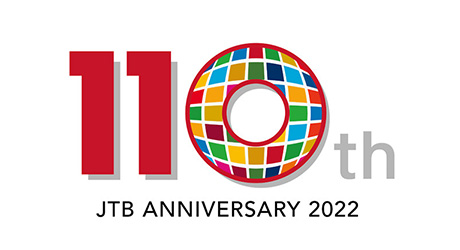Since our founding in 1912.
We have operated our business while evolving our business model.
1910s
- March 1912
- JAPAN TOURIST BUREAU is founded
- Yoshio Kinoshita of then Railway Agency advocated inbound tourism as a means for Westerners to better understand Japan's true nature. This resonated with Kinoshita's immediate supervisor and Vice President of the Agency, Seijiro Hirai, and with the cooperation of the Agency, JAPAN TOURIST BUREAU was founded. (Hirai was President, Danroku Shono was Managing Director, and Kinoshita was one of 11 Directors.) According to archives, JAPAN TOURIST BUREAU was initially often mistaken as a beer hall.
-
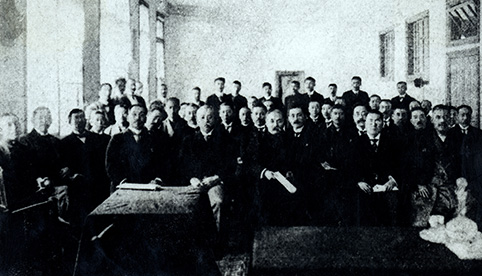
- January 1913
- Inquiry offices are established in Kobe and Shimonoseki
- After its founding, JAPAN TOURIST BUREAU established a headquarters office as well as inquiry offices in Kobe and Shimonoseki. Subsequently, inquiry offices were also established in Yokohama on July 15 and Nagasaki on August 15, 1913. Nagasaki, in particular, attracted many foreigners from Shanghai and Hong Kong for escaping the summer heat. The Nagasaki inquiry office sent 2,000 letters to inform its opening to various countries.
-
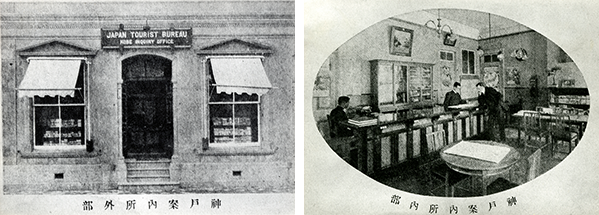
- June 1913
- JAPAN TOURIST BUREAU's bulletin "Tourist" is published(bimonthly publication)
- The bulletin "Tourist" was launched to introduce and develop the businesses of JAPAN TOURIST BUREAU through close coordination among a rapidly expanding network of inquiry offices, branches, and headquarters. The five-color cover featured a beautiful illustration of Mt. Fuji and primroses created by Hisui Sugiura, a modern Japanese graphic designer. 1,000 to 1,500 copies of the first issue were printed and distributed across Japan and overseas.
-
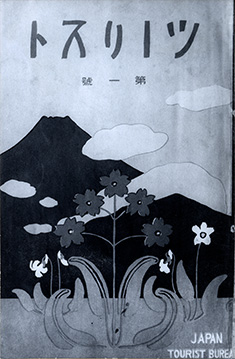
- February 1914
- 30 overseas temporary inquiry offices are established
- The network of inquiry offices covered the major cities of the world by the end of the 1910s. The company also established branches in the Asian continent as well as temporary inquiry offices at world exposition venues and summer vacation areas in Japan and overseas, and continued to expand the scope of its activities.
- January 1915
- Commissioned by Railway Agency, Tokyo lnquiry Office starts selling tickets to foreign visitors
- The Tokyo Inquiry Office began selling tickets to foreign visitors to comprehensively serve their needs by not only providing information, but also making ticket arrangements. The first tickets sold were four first class tickets to Kyoto. The "tickets for foreign visitors" were foreigner-friendly. They were large-size paper tickets, written in both Japanese and English, and were valid for three months. Furthermore, ticketholders could get off at any station on the route at any time.
-
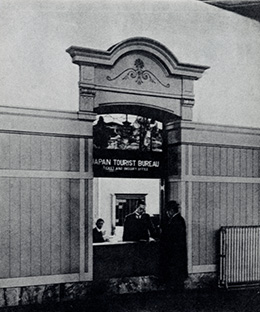
- July 1916
- Company emblem is created
- The company emblem was created by graphic designer Hisui Sugiura who was asked to design the cover of "Tourist". The emblem read, "JTB sailing against the backdrop of a snow- covered Mt. Fuji." Sugiura also created a poster that became the first promotional material for the company. The poster showed a cedar grove, a five-storied pagoda, and deer in Nara Park.
-
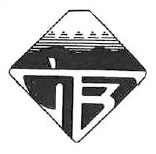
1920s
- April 1924
- The magazine "Travel" is launched
- The travel magazine "Travel" was launched as a project of NIHON RYOKOU BUNKA KYOUKAI, a separate organization from JAPAN TOURIST BUREAU. Its Managing Director Tadatsugu Inomata was appointed executive director of NIHON RYOKOU BUNKA KYOUKAI. It was later renamed NIHON RYOKOU KYOUKAI and split and transferred part of its organization to JAPAN TOURIST BUREAU in April 1932. They merged in 1934. The inaugural issue of "Travel" was printed on Kiku-ban paper, priced at 40 sen (four-tenths of a Japanese yen), and featured an article by travel writer Katai Tayama.
-
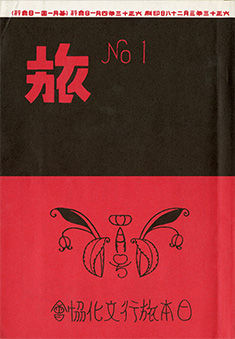
- April 1925
- "Train Timetable" (subsequent JTB Timetable) is launched
- "Train Timetable", which subsequently became JTB Timetable, was launched. In 1925, the company started selling domestic rail tickets to Japanese customers and established inquiry offices at department stores nationwide. It was a milestone year for the company.
-
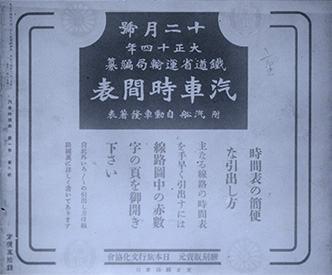
Train Timetable
- December 1925
- Start of sales of theater tickets
- The company partnered with ticket agencies and Kabukiza Theatre and started selling theater tickets
- December 1925
- Start of sales of domestic rail tickets to Japanese customers
- The outbreak of World War I caused inbound tourism to stagnate, and the postwar inflation squeezed the company's finances dependent on revenues from membership fees. To secure funding, the company started selling general tickets for Japanese customers, the "Yuranken sightseeing voucher," among other products. This was bolstered by an upsurge in Japanese people's inclination to travel. Inquiry offices were established at department stores nationwide, including at the Tokyo Nihombashi Mitsukoshi in 1925. As a result of such efforts, JAPAN TOURIST BUREAU began to gain greater recognition among the people.
-
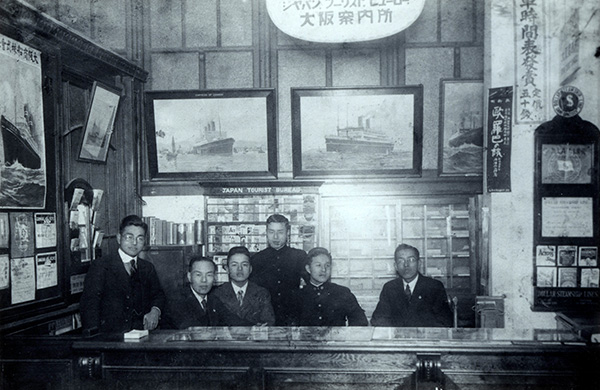
- January 1927
- Start of sales of JTB Traveler's Check
- Carrying around cash during travel was a major concern for people at the time. Especially in the case of overseas travels, differences in currency and exchange rate fluctuations compounded the troubles and concerns and halved the joy of traveling. The company therefore decided to issue Japan's first traveler's checks in yen. In partnership with Daihyaku Bank, the traveler's check was initially sold in denominations of 20 yen, 50 yen, and 100 yen. It later became 10 yen, 20 yen, and 100 yen.
-
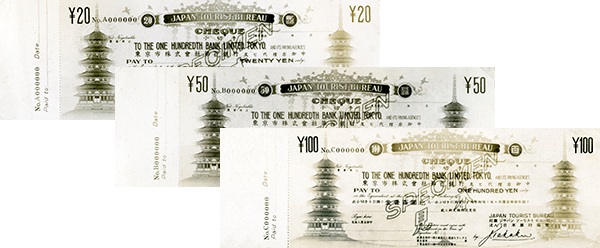
- July 1927
- JAPAN TOURIST BUREAU becomes incorporated body
- In response to the expansion of our business, we incorporated as an incorporated association and became "Japan Tourist Bureau Incorporated Association". This reorganization was an opportunity to take a step forward as a travel service organization for both domestic and international passengers.
1930s
- June 1932
- Start of sales and delivery of rail tickets (Tokyo, Osaka)
- Tickets were delivered by "messenger boys" on bicycles. The types of tickets delivered were: train ticket; berth ticket; rapid service ticket; sightseeing ticket; carnet (group of tickets); and group ticket. The boys in smart uniforms peddling their bicycles became known as "JAPAN TOURIST BUREAU's moving promotional boards." This service, along with the catchphrase, "Phone JAPAN TOURIST BUREAU for a ticket," was appreciated by customers.
-
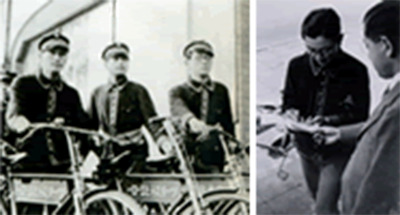
- September 1934
- Renamed JAPAN TOURIST BUREAU(NIHON RYOKOU KYOUKAI)
- The business of the existing NIHON RYOKOU KYOUKAI (domestic travel organization) was absorbed to strengthen services for Japanese customers. The company's new name consisted of "JAPAN TOURIST BUREAU" in English and "NIHON RYOKOU KYOUKAI" in Japanese. This business expansion was the most noteworthy in the company's history before World War II.
- August 1935
- 10th anniversary of sales of vouchers (Yuranken sightseeing voucher)
- Ten years passed since the "Yuranken sightseeing voucher" was launched in 1925. This all-in-one booklet of vouchers for train rides, ferry rides, car rides, and accommodation enabled customers to travel without the hassle of buying tickets between the departing and destination stations. Its unprecedented convenience made it a popular product since its launch. In celebration of the 10th anniversary, slogans were solicited from the public for a prize, and "Travel is synonymous with vouchers" was selected.
-
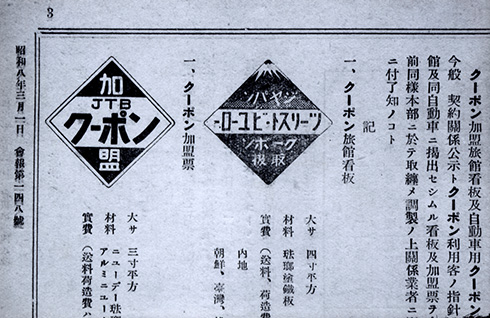
- April 1936
- Start of sales of entry tickets to shrines and temples
- Start of sales of entry tickets to shrines and temples
1940s
- September 1940 - May 1941
- Unstinted efforts for the evacuation of Jews
- Following the outbreak of World War II in September 1939, many Jews evacuated to the former Soviet Union to escape the persecution of the Nazis (German armed forces). At this time, the American Jewish Committee extended a helping hand to bring the Jews to the United States, and through Walter Pround, with the permission of the U.S. government, JAPAN TOURIST BUREAU was asked for its cooperation with the travel arrangements. The Jewish refugees traveled from Europe on the Siberian railway to Vladivostok, and then entered Japan via Tsuruga and headed to San Francisco from Yokohama or Kobe. JAPAN TOURIST BUREAU made the transport arrangements upon their arrival in Vladivostok. It operated a ship service between Tsuruga and Vladivostok every week for ten months and helped with the evacuation of around 4,000 Jews.
-
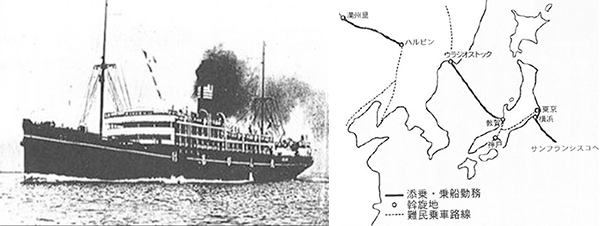
- August 1941 - December 1943
- Renamed twice, reorganized once
- The company was renamed East Asian Travel Agent (an incorporated body) in 1941. At the same time, JTB Traveler's Check was renamed East Asian Travel Agent Traveler's Check. That December, the Imperial Japanese Navy attacked Pearl Harbor, and the Pacific War broke out. The number of foreign visitors to Japan fell sharply due to the Second Sino-Japanese War and the Pacific War. At the request of the Japanese government, East Asian Travel Agent restricted its activities to group transport. In order to deepen friendly and cultural exchanges with mainland China and southern countries, the company had a new duty to "promote all aspects of Japan to southern countries through travel." The company thus terminated its system of operating based on membership fees, and was reorganized into a foundation to carry out activities in line with the national policy (East Asian Travel Agent [a juridical foundation]). In the following year, the International Tourism Bureau was abolished as the tourism business was deemed unsuitable in time of war. East Asian Travel Agent took over the assets and work of the International Tourism Association and was renamed East Asian Travel Corporation.
-
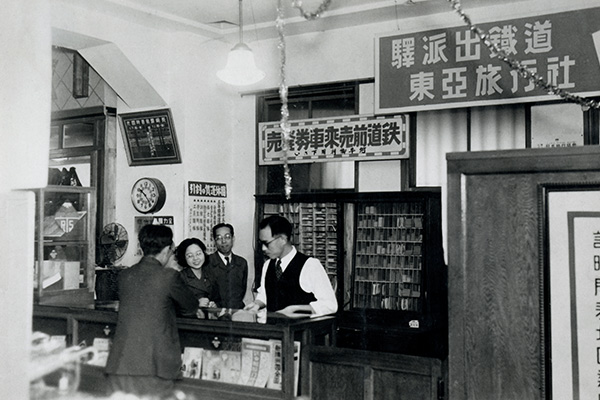
- September 1945
- Renamed JAPAN TRAVEL BUREAU
- On August 15, 1945, the long war drew to a close with Japan's acceptance of the Potsdam Declaration. Losing all of its overseas offices, East Asian Travel Corporation was renamed JAPAN TRAVEL BUREAU and made a new start. At the time of the renaming, the donation policy was amended, and the business purpose was clarified from "promote the national culture" to "introduce the national culture and attract foreign visitors." This is because tourism resources provided Japan's only source of funding at the time and the new business purpose was essential for Japan, a country in peace, to aspire towards international goodwill.
-
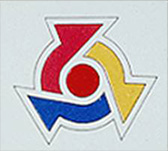
- January 1946
- Museum of Transportation Culture(subsequent Transportation Museum) is opened
- Museum of Transportation Culture (subsequent Transportation Museum) is opened
-
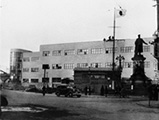
- October 1946
- Headquarters is moved to new building
- Buildings in Tokyo were severely damaged by the war, and no buildings were available for rent. The company could not leave Tokyo due to the nature of the business and struggled to find a building to locate its headquarters. Then, thanks to the kindness of MITSUBISHI ESTATE, the company was able to lease land in 1-1 Marunouchi and construct a new building. Due to rising inflation, the construction cost of the new two-story wooden building is said to have been nearly the same as that of a prewar eight-story concrete building.
-
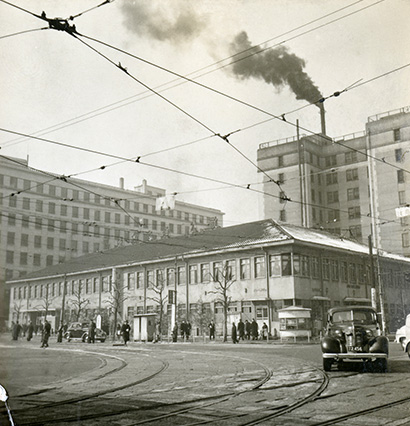
- November 1948
- Accredited as IATA (International Air Transport Association) travel agent
- In July 1947, with the permission of the occupation forces, Northwest Airlines established routes through New York, Anchorage, Tokyo, and Manila. U.S. commercial airlines began to make transits in Japan, opening the way for the postwar overseas travel business. The company was authorized as an IATA agent in November 1948 and concluded agent contracts with U.S. commercial airlines.
1950s
- July 1952
- Travel Agency Business Act enters into force (JAPAN TRAVEL BUREAU is first registered company)
- Following the prolonged U.S. occupation, a sense of freedom prevailed and there was an economic boom, which in turn created a travel boom. As a result, numerous travel agencies were established in the city, including ill-intentioned businesses to which many people fell victim. The government therefore enacted the Travel Agency Business Act, and JAPAN TRAVEL BUREAU became the first registered company.
- December 1952
- First edition of "Egoyomi" (subsequently "Tabi no Egoyomi") is published
- The first edition of the calendar "Egoyomi" (subsequently "Tabi no Egoyomi") was published. It received wide acclaim and earned a prize at a calendar exhibition. Published annually ever since, "Tabi no Egoyomi" contains information on festivals held across Japan throughout the year and has many fans. Based on the theme of "Tohoku stories to be passed on for another 100 years," each month of the 2012 calendar showed beautiful sceneries of Tohoku and introduced the background story, hoping for tourism to revive in Tohoku.
-
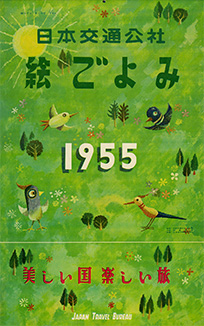
- February 1955
- Start of sales of "Shuyuken excursion voucher"
- The prewar "Yuranken sightseeing voucher" was re-launched as the "Shuyuken excursion voucher" in 1955. Its convenience and good value gained popularity, and the number of voucher users rose dramatically in proportion to the growing travel demand. In particular, unlimited excursion vouchers, including the "Hokkaido unlimited excursion voucher" launched in July 1956, offered unlimited train rides in the destination area―a groundbreaking idea at the time―and greater convenience for customers. It became a driving force of the transition to the "period of mass travel" that began with the onset of high economic growth under the government's Income Doubling Plan from 1960.
-

1960s
- December 1960
- New company building (Travel Bureau Building) is completed
- The temporary two-story wooden headquarters building deteriorated with age as society recovered from the postwar turmoil and new buildings filled the streets of Marunouchi. Since a wooden building also posed constant fire concerns, a new building (Travel Bureau Building, 1-1, Marunouchi, Chiyoda-ku, Tokyo) with nine stories above ground and three stories below was completed in 1960.
-
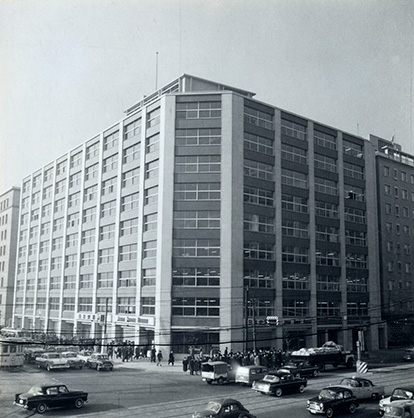
- March 1962
- 50th anniversary of establishment
- Special services were offered in celebration of the 50th anniversary of the company. Lottery winners were awarded prizes, including the special prize, a color TV. A large photo book on Japanese sightseeing, "JAPAN," was also published in commemoration of the anniversary. To promote Japan across the world, the book (B4 art paper, 256 pages) contains beautiful photos showing Japan from a multitude of aspects, including arts, architecture, handicraft, life in the city/countryside, industries, sports, music, recreation, sightseeing, annual events, gustatory taste, and shopping, accompanied with Japanese and English commentary. The book was distributed to members of the industry and sold in the overseas market.
-
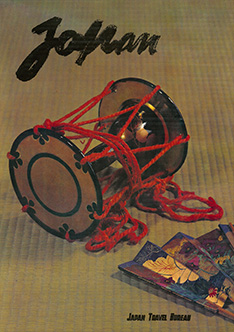
- September 1962
- Started sales of "Set Travel"
- We have launched the "Set Travel" package. The birth of the "Set Travel" was a concrete measure to develop from a "ticket agent" to a "travel agent," and it was a response to the need for new product planning tailored to the needs of our customers. This set tour was the prototype of travel products, which led to package tours and ushered in the "golden age of travel products".
-
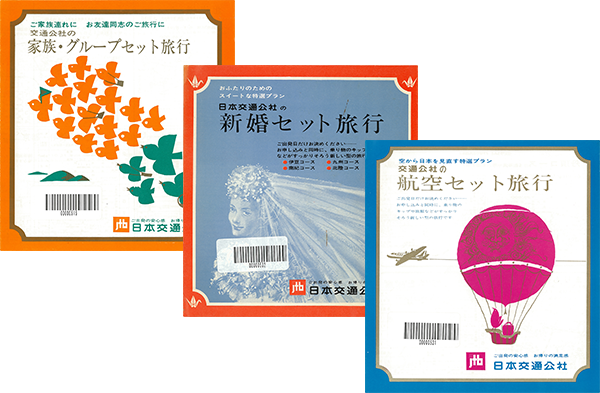
- November 1963
- JAPAN TRAVEL BUREAU Inc. is established; start of operations on December 1, 1963
- Since JAPAN TRAVEL BUREAU had become a recognized name in society, JAPAN TRAVEL BUREAU Inc. was established without changing the company name (the juridical foundation JAPAN TRAVEL BUREAU remained in operation as a reorganized body handling only public interest activities). Based on the objective of "providing true convenience and satisfaction to travelers," the new company set forth nine basic business guidelines on improving its services, including "ensuring user-friendly and nice atmosphere stores," "providing quick service," and "developing better reservation and arrangement-making skills" for improving customer service quality. At the same time, a new company emblem was created. It consisted of the letters "jtb." The superscript dot on the "j" had a small circle resembling the Japanese flag that imprinted an image of Japan on foreigners' minds.
-
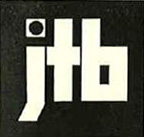
- March 1964
- SUNRISE TOURS is launched on the inbound travel market
- SUNRISE TOURS are travel packages for foreign visitors to Japan. A variety of plans were released, including day trips and 16-day tours. They ranged from standard trips to Nikko, Hakone, and Nara, to a trip to Mt. Washuzan (Kurashiki), a factory tour, and a sukiyaki party in Kyoto. Whereas foreign visitors previously had to arrange personal guides and pay for their own travel expenses and meals and their guide's, this was no longer required with JTB's tour packages. All plans came with tour guides, were inexpensive, allowed customers to visit places they cannot individually, and were highly appreciated by customers.
-
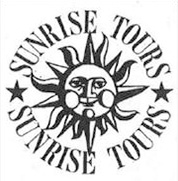
- October 1964
- JTB becomes domestic ticket sales agent for Tokyo Olympics
- The Tokyo Olympic Games was a symbolic event that marked the return of Japan to the international community from defeat in World War II. JTB became the domestic ticket sales agent for the first Olympic Games held in Asia and handled the sales of approximately 800,000 tickets. A total of 20,000 employees were mobilized for ticket sales.
- April 1968
- Start of sales of "Overseas Set Travel"
- JTB launched its first "Overseas Set Travel" plan, the "Mini Honey Series" ("Hawaii Mini," "Honey Hawaii," "Hong Kong Mini"), which paved the way for overseas travel packages.
- June 1968
- JTB's overseas travel brand LOOK is launched
- JTB's overseas travel brand was named "LOOK." Its casual image was deemed to suit the popularization of overseas travel, had strong impact, and could be written in both katakana letters and the Roman alphabet. The selection was made out of 700 candidate names collected internally and externally. The logo was created at the same time. *JTB established a business tie-up with Nippon Express Co., Ltd. over LOOK in November 1968 and began joint planning, purchases, and sales in April 1969. The tie-up was dissolved in April 1989, and the current "LOOK JTB" was established.
-

1970s
- January 1970
- Start of operations of Ryokan and Hotel Telephone Reservation Center
- The Ryokan and Hotel Telephone Reservation Center commenced service in Tokyo. Its tagline was: "You and ryokans/hotels are connected by a computer. Call to make a reservation." The Center received favorable reviews from homemakers across Japan.
- March 1970
- Arrangements provided for 12 million people at the World Exposition held in Osaka
- The first Expo (Japan World Exposition) in Asia was held under the theme "Progress and Harmony for Mankind." JTB sold tickets, provided arrangements for travelers, and helped manage the venues, servicing 12 million visitors during the event.
- January 1971
- Start of sales of domestic travel products through ACE brand
- JTB began sales of its first domestic travel products through the ACE brand under the slogan, "JTB will transform Japan's travel scene." 110 Spring ACE plans were initially launched. The unique product lineup caused a sensation in newspapers and magazines and started a domestic travel boom.
-
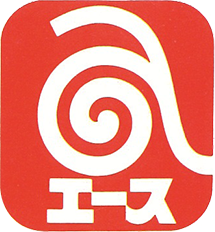
- July 1973
- Travel magazine "Rurubu" is launched
- "Rurubu" is a magazine with a colorful cover and pages printed on A4 based paper designed for active women. "Rurubu" was a new term formed by taking the last letters of the verbs "mi ru" (to see), "tabe ru" (to eat), and "aso bu" (to play). The term was also intended to portray travel in various light, using other verb combinations such as "no ru" (to ride), "shi ru" (to know), and "m ana bu" (to learn).
-
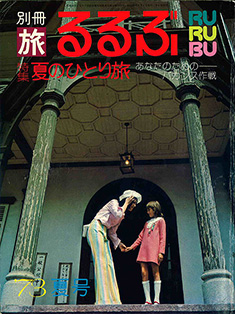
Travel magazine "Rurubu"
- January 1975
- Start of "Call & Mail" system
- The "Call & Mail" system (direct marketing of travel products) was started in Tokyo, Nagoya, and Osaka. Travel reservations were made by phoning the Telephone Reservation Center. The stub re ceived when the travel fee was deposited at a bank or post office was used as a participation certificate. This new system gradually led to the wider use of direct marketing of travel services.
1980s
- May 1982
- 1st "Mori no Nigiwai"(Evening of Noto's Traditional Arts)JTB original event, is held
- "Mori no Nigiwai" is a JTB original event that showcases local performing arts and folklore, including festivals from all over Japan. The first show "Evening of Noto's Tradit ional Arts" was held in Wakura Onsen in Ishikawa Prefecture. "Mori no Nigiwai" began as an event to commemorate JTB's 70th anniversary and has since been held annually nationwide. The 133th show was performed in Okinawa in January 2019.
-
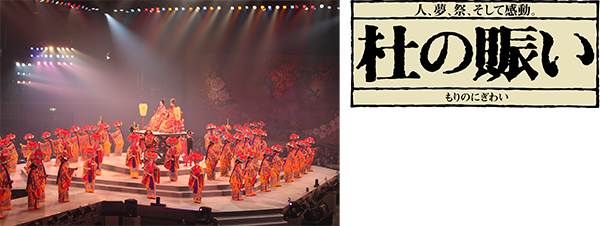
- November 1982
- Implementation of JTB Tourist Spot Cleanup Campaign
- The JTB Tourist Spot Cleanup Campaign was started to keep sightseeing areas clean and dynamic. The goal was not only beautification of tourist spots through cleanups but also to have interactions with local communities. The campaign was renamed "JTB Bright er Earth Project" in 2012 on JTB's 100th anniversary, aimed at inspiring communities and putting smiles on people's faces.
-
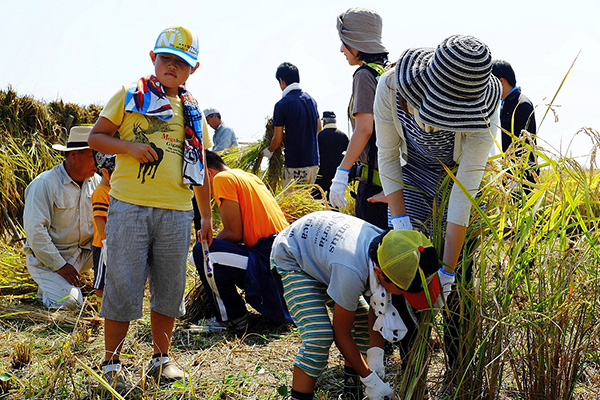
- 1983.08 (昭和58年)
- "YES JTB Card" issued
- "The YES JTB Card" was issued to provide a variety of payment methods that meet the needs of our customers. As the name "YES" implies, the card was designed to be an "exclusive travel and leisure card" that could be used not only for domestic travel but also for overseas travel. In October of the same year, mail order sales through the member magazine "YES" were launched. The magazine sold world-class goods and souvenirs, such as down quilts and Wedgwood cufflinks.
-
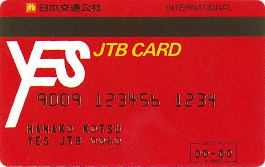
- April 1985
- Launch of sales of advance payme nt plan "Tabitabi"
- The new system "Tabitabi" allowed customers to pay in advance in installments (automatic deduction from bank account) or lump sum payments by cash, and receive travel vouchers at maturity. It was popular with customers and was awarded th e Nikkei Ryutsu Shimbun's grand prize in January 1986.
-
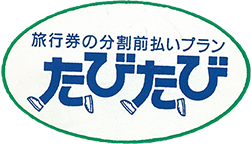
- November 1987
- Start of sales of "Nice Shop" merchandise voucher valid at department stores
- The "Nice Shop" voucher was valid a t leading department stores in Japan. Initially, only the 500 yen denomination was available. The voucher could be used at significantly more stores than the vouchers issued by department stores at the time and was popular with customers.
-

- October 1988
- JAPAN TRAVEL BUREAU is renamed JTB
- JAPAN TRAVEL BUREAU was renamed JTB in 1988. The JTB logo design and the dynamic red corporate color still in use as of 2019 represent JTB's youthful and state of the art corporate image. "We will change from JAPAN TRAVEL B UREAU to JTB. JTB is always with you." Based on this catch copy and under the new tie line, "For Your Travelife," a large scale promotional campaign was launched in various mediums, including TV commercial, newspapers, magazines, and major events.
-
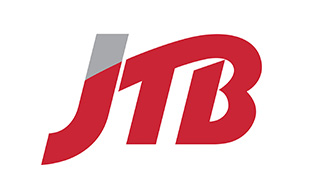
- July 1989
- Establishment of Japan International (current JI) Accident & Fire Insurance Co., Ltd.
- Establishment of Japan International (current JI) Accident & Fire Insurance Co., Ltd. Japan International (current JI) Accident & Fire Insurance Co., Ltd. was established in a joint venture with AIG, a leading insurance company of the United States. It aimed to provide not only travel related insurance but also a range of other products, including new leisure service insurance products.
1990s
- January 1991
- Launch of direct marketing product "Tabi Monogatari" (Travel
- "JTB no Tabi" (JTB Travel), a JTB product which had been sold at stores and by direct marketing, was turned into a direct marketing only product under the name "Tabi Monogatari." The new name was decided after hearing the opinions of custome rs through newspaper advertisements and based on the criteria that it visually fits as an advertising logo, has impact, can be applied to both domestic and overseas travel, and is suitable as a title of a members bulletin. With a shriek of joy, a flood of phone calls was received the day the newspaper ad was published, causing the telephone lines to nearly go down.
-
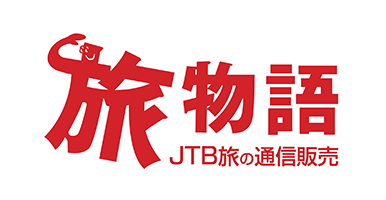
- November 1992
- Construction of training/accommodation facility and computer center Foresta is completed
- Construction was completed of Foresta, a training/accommodation facility and computer center to herald a new era of JTB's education and information strategy. Spanning 30,155.19m2, it consists of the eastern training/accommodation building 13 stories above ground and 2 stories below, and the wes tern computer building 4 stories above ground and 2 stories below. Amid cutbacks due to a prolonged economic slowdown, Foresta was built as advance future investment for human resources development and information strategy.
-
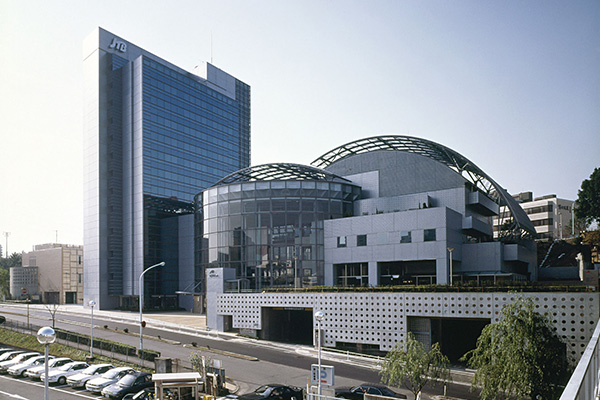
- March 1995
- 1st Honolulu Festival is held
- In April 1994, a ceremony was held at then Kuramae Kokugikan Sumo Arena to celebrate the upcoming procession of two mikoshi portable shrines named "spirit of rice ears" in Hawaii. The first procession of these two mikoshi was exhibited at the Japanese Cultural Center of Hawaii's completion ceremony and received positive reviews. This led to the holding of the 1st Honolulu Festival in March 1995, participated by 3,662 people from 70 organizations in Japan. The highlight of the festival was a procession of 15 mikoshi along Kalakaua Avenue that was closed for four hours. Interactions with local Hawaiians were deepened as people chanted "wasshoi" while carrying Noboribetsu city's demon mikoshi, Tokyo's Asakusa Nakamise mikoshi, Ishikawa Prefectu re's vegetable mikoshi, and Hawaiian fruit mikoshi.
-
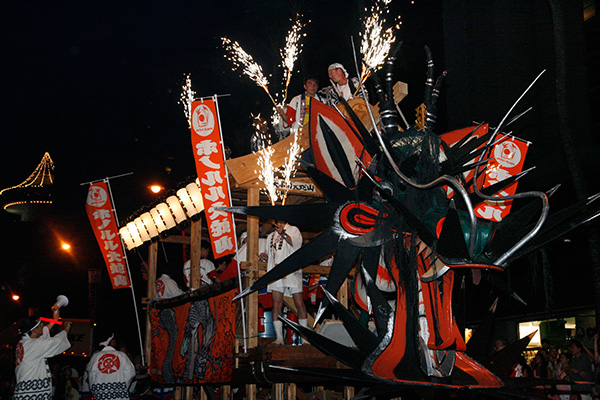
- April 1995
- 'Oli'Oli system is introduced in Hawaii
- Oli'oli" means "joy and delight" in Hawaiian. As the term implies, LOOK JTB developed the new 'Oli'Oli system based on the concept of offering an enjoyable experience in Hawaii for both first timers and repeat visitors. It was designed to make visitors' stay in Hawaii more enjoyable and comfortable through services such as the well known LOOK JTB 'Oli'Oli trolley service, 'Oli'Oli shuttle service to famous sightseeing spots in Hawaii, and free 'Oli'Oli mobile phone rental service.
-
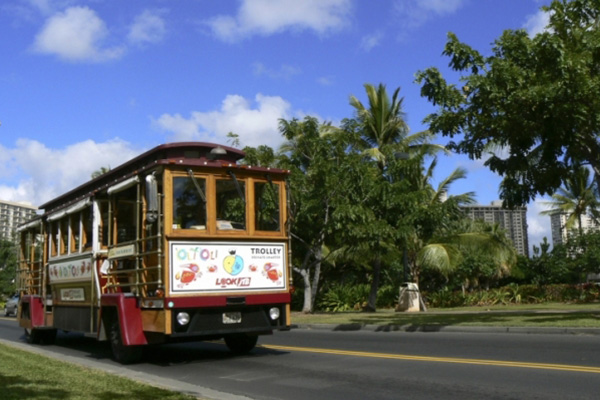
- February 1996
- Introduction of multimedia stations and start of sales of travel products
- A travel product sales tool of the new era, multimedia station, was introduced a t 100 Sunkus convenience stores in Tokyo and drew great public attention. Multimedia stations were developed through collaboration among JTB, Sunkus & Associates (current Circle K Sunkus), and IBM Japan. It could issue amusement park tickets and airline ti ckets, as well as make reservations for domestic and overseas tours. The concept of instantly issuing tickets through credit card payments was groundbreaking at the time, and the multimedia stations became synonymous with "automatic vending system for trav el."
- April 1998
- Start of online sales of travel products
- The company launched JTB INFO CREW, a one stop system for online travel reservations and payments. This allowed the "JTB accommodation survey" to be filled out online rather than by postcard as be fore. Such services instantly accelerated use of the Internet for travel.
2000s
- March 2000
- Establishment of Internet travel sales company Tavigator, Inc.
- Internet travel sales company Tavigator, Inc. was established with Yahoo Japan Corporation and the SoftBank Group. A website was established enabling customers to access not only JTB Group products but also travel products of other companies.
-
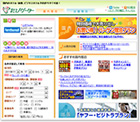
- August 2000
- Establishment of JTB Business Travel Solutions, Inc.(JTB CWT structure after CWT's capital injection in January 2001)
- In August 2000, JTB Business Travel Solutions, Inc. was established as a JTB wholly owned company specializing in business travel. In January 2001, a joint venture agreement with Carlson Wagonlit Travel (CWT) was concluded. The business of its Japanese cor poration was integrated, and the existing structure was formed.
- January 2001
- Renamed JTB Corp.
- The company was renamed JTB Corp., and the headquarters office was relocated to Tennozu. It established the Group mission of developing tourism in the 21st ce ntury and striving to foster peace and interconnectedness through opportunities for meaningful human interaction, domestically and globally. A new tie line, "For Your Travel & Life," was also established.
-

- April 2006
- Transfer to new Group management structure (segmentalization of business)
- The JTB Group transferred to a new Group management structure to become a group of companies that squarely faces the market (customers) and place the Group back on a growth path. A new tie line, "Your Global Lifestyle Par tner," was established to achieve the "JTB Group Dream": providing the best services to fulfill the dreams of customers, always from their perspective, and earning recognition as an indispensable partner of customers.
-
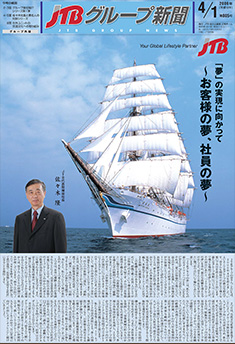
- July 2006
- Establishment of J&J Business Development Corp., as joint venture with JCB Co.,
- J&J Business Development Corp. was established as a joint venture with JCB Co., Ltd. to leverage the management resources of JTB and JCB and further improve customer service. Two subsidiari es of J&J were established: JCB Travel Co., Ltd., which handles travel services for JCB members; and J&J Gift Corp., which is entrusted with the gift voucher operations of JCB and JTB.
- June 2007
- Start of sales of "Nice Gift" joint vouchers with JCB Co., Ltd.
- "JTB Nice Gift" vouchers were issued as part of the business tie up with JCB Co., Ltd. The gift vouchers of JTB and JCB were integrated, and JCB was commissioned to handle the participating stores. As a result, the gift vouchers became more versatile a nd convenient, and the number of participating stores increased to over 500,000, one of the most in Japan.
-

Nice Gift
- April 2009
- "JTB Timetable" 1,000th issue is published
- The "Train Timetable" launched in 1925 later became the "JTB Timetable", and its May 2009 is sue marked the 1,000th issue. A commemorative event was held in collaboration with the Railway Museum, inviting JTB Timetable readers. At this timing, the "Rail Travel Japan" project was initiated with the objective of starting a domestic travel movement b y showcasing the charms of local railways. In particular the "Rail Girls Project" by female rail fans gained attention and was introduced on TV. Based on its number the cover of the 999th issue, the issue before the 1,000th issue, featured an original illu stration of Galaxy Express 999 by manga artist Leiji Matsumoto and drew significant attention.
-
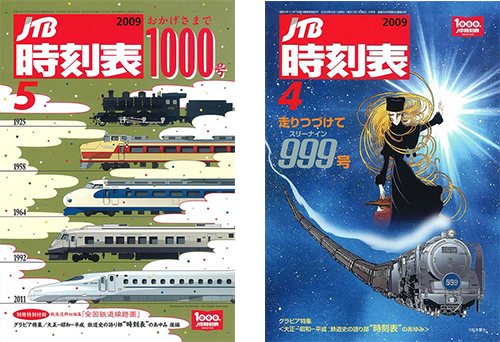
2010s
- December 2010
- "Rurubu" is recognized as the world's longest travel guide series
- The "Rurubu" series published by
the JTB Group's publishing company, JTB Publishing,
Inc., was recognized as the "longest series of published travel guides" in the world by the
Guinness Book of RecordsTM. The 3,791 editions published between August 1984 and
November 2010 was recognized as No. 1 in the world. Among the various travel guide series
published throughout the world, Japan's "Rurubu" was recognized for publishing the most
number of editions. (Recognized on December 16, 2010)
If all editions of "Rurubu" are stacked vertically, its height would reach approximately 1.6 times the height of Tokyo Skytree (634m). -
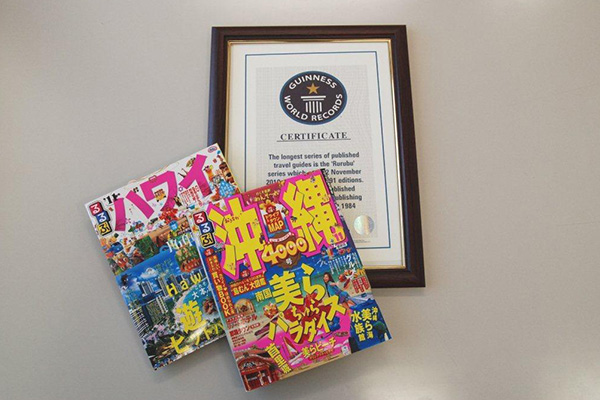
- April 2011
- Formulation of new Group brand slogan, "Perfect moments, always"
- The JTB Group established a new brand message, "The JTB Way," aiming to further increase its brand value ahead of the 100th anniversary of its establishment in March 2012. As part of the message, a new brand slogan, "Perfect moments, always," was established.
-
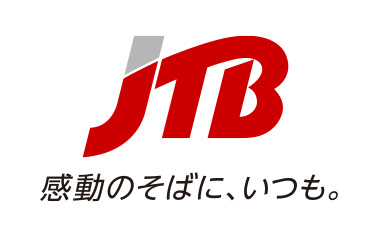
- October 2011
- Start of sales of foreign travel products for Chinese people under "Youyi" name
JTB Group becomes first certified foreign travel company in China - In May 2011, the JTB Group's travel company in China, JTB New Century International Tours Co., LTD, became the first foreign travel company permitted to sell overseas travel products to Chine se people in China. In September 2011, it started selling travel products for individual customers under the brand name "Youyi," meaning "leisurely time and quality service." Based on the concept of "reliability," "excitement," and "satisfaction," it sells tour and independent travel packages as well as travel products customized to hobbies and themes.
-
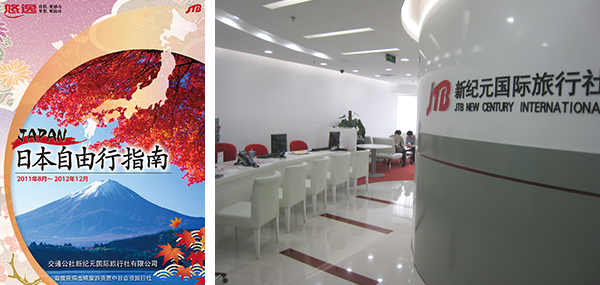
- March 2012
- 100th anniversary of establishment
- 100th anniversary of establishment
The JTB Group celebrated its 100th anniversary on March 12, 2012.
We, the JTB Group, owe our first 100 years of success to our customers. We will continue to build on that success by delivering products, services and solutions that surprise and delight, inspired by the Earth's majestic beauty. Stay tuned for what's in store from the JTB Group. -
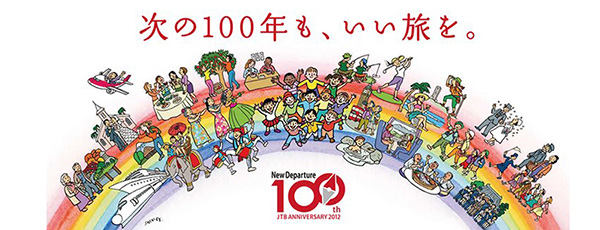
- September 2014
- Furusato tax payment portal site "Furu-Po" established.
- In September 2014, we launched FURUPO, a portal site for hometown tax payments. In 2016, we developed the "Furusato Tax Payment Travel Coupon" as one of the return gifts. This is an initiative unique to a travel agency, where people can donate to the region they wish to support and use the coupon to visit the region on a trip, further supporting the region. After this, Furusato Connect, a corporate version of the Furusato tax portal site, will be launched in 2020. The site creates matching opportunities between local governments that are engaged in regional development and companies that promote the SDGs as their business or social contribution activities.
-
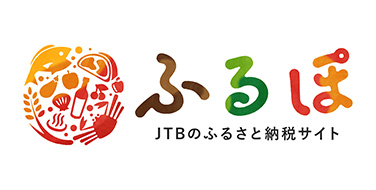
- April 2016
- JTB Communication Design established.
- The objective is to provide one-stop solutions for various issues in the communication domain (MICE, advertising and promotion, human resource solutions, etc.) for corporate clients.
JTB Communication Design, Inc. was established on April 1, 2016 by integrating certain operations of JTB Communications, Inc., ICS Convention Design, Inc. -
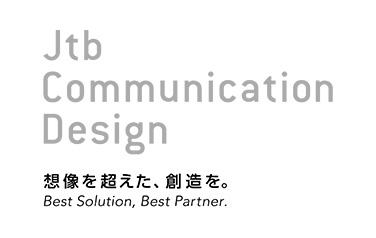
- March 2017
- PT Panorama JTB Tours is established as a joint venture with Panorama Group in Indonesia.
- In Indonesia, where the leisure market is expected to grow rapidly, we have formed a capital and business alliance with PT. Panorama Tours Indonesia, the largest travel agency in the country, and integrated it with JTB Jakarta Branch to establish PT. Panorama JTB Tours Indonesia. Panorama JTB" brand throughout Indonesia.
- April 2017
- Launch of Japan domestic tours using the luxury bus "ROYALROAD PREMIUM
- As part of our strategy for wealthy customers, we introduced an original luxury bus with a 10-passenger layout instead of the usual 45-seat large bus for the purpose of providing one-rank higher customer satisfaction. We launched tours based on the concept of "riding comfort like first class.
We have also planned a well-received round-the-Japan tour, taking advantage of the feature that all seats have independent leather upholstery on the window side, so passengers do not get tired even on long-distance trips.
We offer not only package tours but also custom-made tours, corporate clients, inbound travel to Japan, and many other situations. -
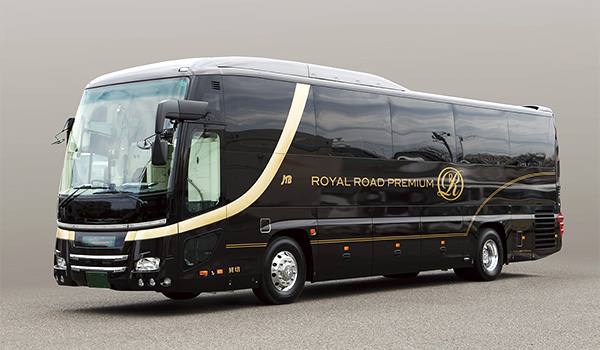
- May 2017
- JTB Group has agreed to acquire Kuoni Global Travel Service
- JTB Group has agreed to acquire Kuoni Global Travel Service, a leading European inbound operator with a strong customer base in the Asian market, through a share transfer. With this acquisition, the JTB Group is further promoting its efforts in the inbound business from Asia to Europe.
- January 2018
- Company name changed to JTB Corporation (English name: JTB Corp.)
- Effective January 1, 2018, the company name was changed from "JTB Corporation" in katakana to "JTB Corporation" in alphabetical form.
In April of the same year, the company launched "Management Reform to Provide New Value" and changed its business domain from "Exchange and Culture Business" to "Bringing People, Places and Possibilities Together"
JTB is committed to providing unique solutions (products, services, information, and systems) to create all kinds of interactions on the global stage and to evoke excitement and empathy in our customers.
- April 2018
- New management structure started with the integration of 15 JTB Group companies
- In 2006, the JTB Group established a management structure consisting of a business holding company and a group of operating companies by region and function, with the aim of responding directly to the market. A Group Corporate function responsible for company-wide management strategy and four Business Business Units (Individual, Corporate and Global) responsible for business strategy promotion functions were established.
- September 2019
- Contributing to the success of the Rugby World Cup 2019™ in Japan as the country's only official travel agent
- For the first-ever Rugby World Cup 2019™ in Japan, JTB was the exclusive distributor of hospitality programmes and travel packages, offering a diverse range of products. In addition to spectator tours, the company was also involved in the operation of 12 venues, player transportation and public viewing, contributing significantly to the success of the tournament.
2020s
- June 2020
- Dynamic pricing travel products
Launch of Dynamic Package JTBMySTYLE - Under the theme of "Travel more freely and flexibly", the airline has started selling a dynamic pricing-type domestic individual travel product, in which the travel price fluctuates according to the availability of seats and rooms. You can book up to 354 days in advance (355 days in advance for the return trip) from your PC or smartphone, 24 hours a day, and freely combine round-trip air, round-trip JR, local car rental and accommodation. You can always book at the most up-to-date travel prices, which are subject to daily price fluctuations.
-

- August 2020
- Virtual School Trip 360", a new type of travel experience that combines realism and VR
- Using virtual reality (VR) technology, this is JTB's original content that allows children to enjoy immersive visual experiences of the destinations they visit while at school, and experiences unique to VR that are not possible on regular trips. It was developed to create memories for children whose school trips were cancelled due to the Corona disaster, and to support tourism businesses.Children who have experienced the content have commented that it "strengthened my desire to actually visit the area." The children have commented that they are now more interested in actually visiting the area.We are evolving the programme into a new learning programme on the theme of the SDGs so that it can be used for prior learning even after real exchanges have been restored.
-
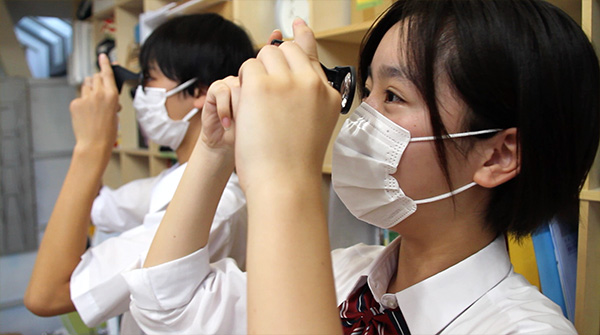
- August 2021
- As an official travel service partner of the Tokyo 2020 Olympic and Paralympic Games, the Group handled approximately 269,000 people on behalf of the Organising Committee, athletes and other Games-related parties.
- For the first time in history, the Games were postponed for one year and, in principle, were held without spectators, but as a sponsor of the Games, the Group worked as one and under the slogan 'Bridging the New, Connect, Start', a total of 40,000 employees were involved in the Games.
In addition to sales of spectator tours, the Group completed a wide variety of Games management tasks, including the acceptance of delegations from all over the country for pre-event camps and other Corona support. In order to inherit and sublimate tangible and intangible legacies, such as the development of experience content in cooperation with industry, government and academia, the Sports Business Co-Creation Department was newly established and is working to improve the value of customer experience with sports as the starting point.
- January 2022
- Full-scale launch of initiatives to reduce environmental impact
- On the occasion of our 110th anniversary, we have accelerated our sustainability initiatives in our business domain of 'Exchange and Creation Business', setting a decarbonisation target of carbon neutrality across our business activities by 2050 and entering into a partnership with the Global Sustainable Tourism Council.
We are working towards the realisation of a sustainable society by expanding solutions that contribute to the reduction of environmental impact, such as the Zero CO2 Travel Programme and Zero CO2 MICE, and developing the Brighter-Earth Project, an activity to create a vibrant future together with local residents. -
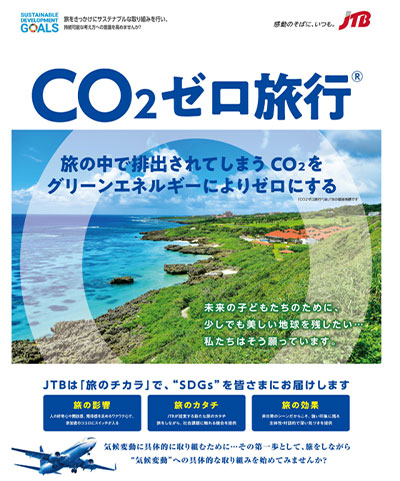
- March 2022
- 110th anniversary
- On 12 March 2022, the JTB Group celebrated its 110th anniversary. Under the theme "Creating a Sustainable Tomorrow", we committed ourselves to the future of our planet. The JTB Group will continue to take new steps forward and take on new challenges to ensure a bright future full of smiles for future generations.
-
